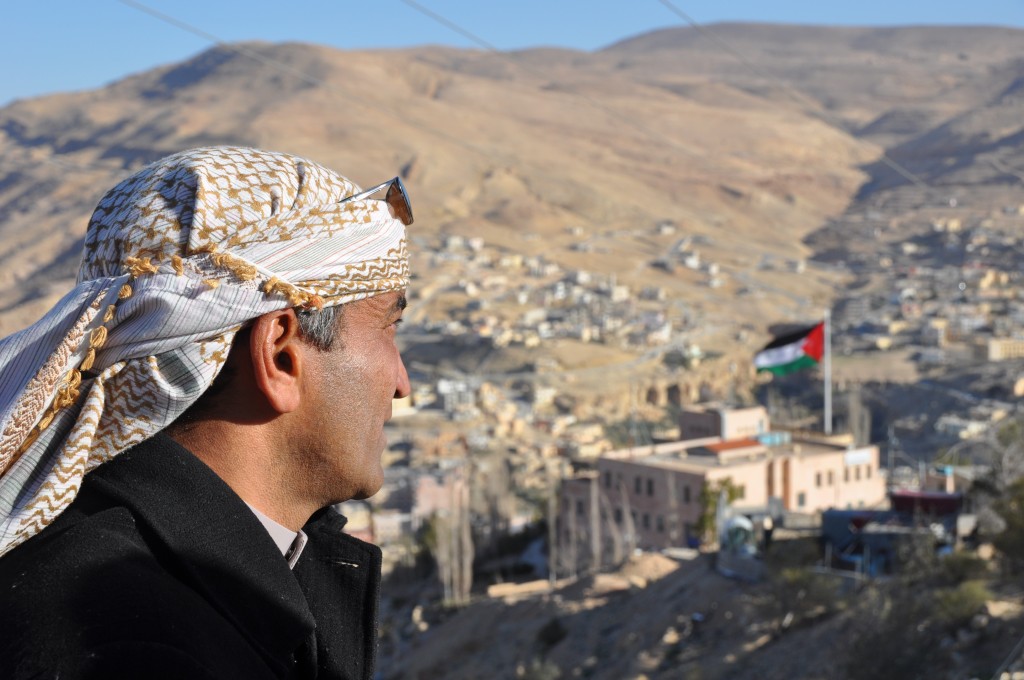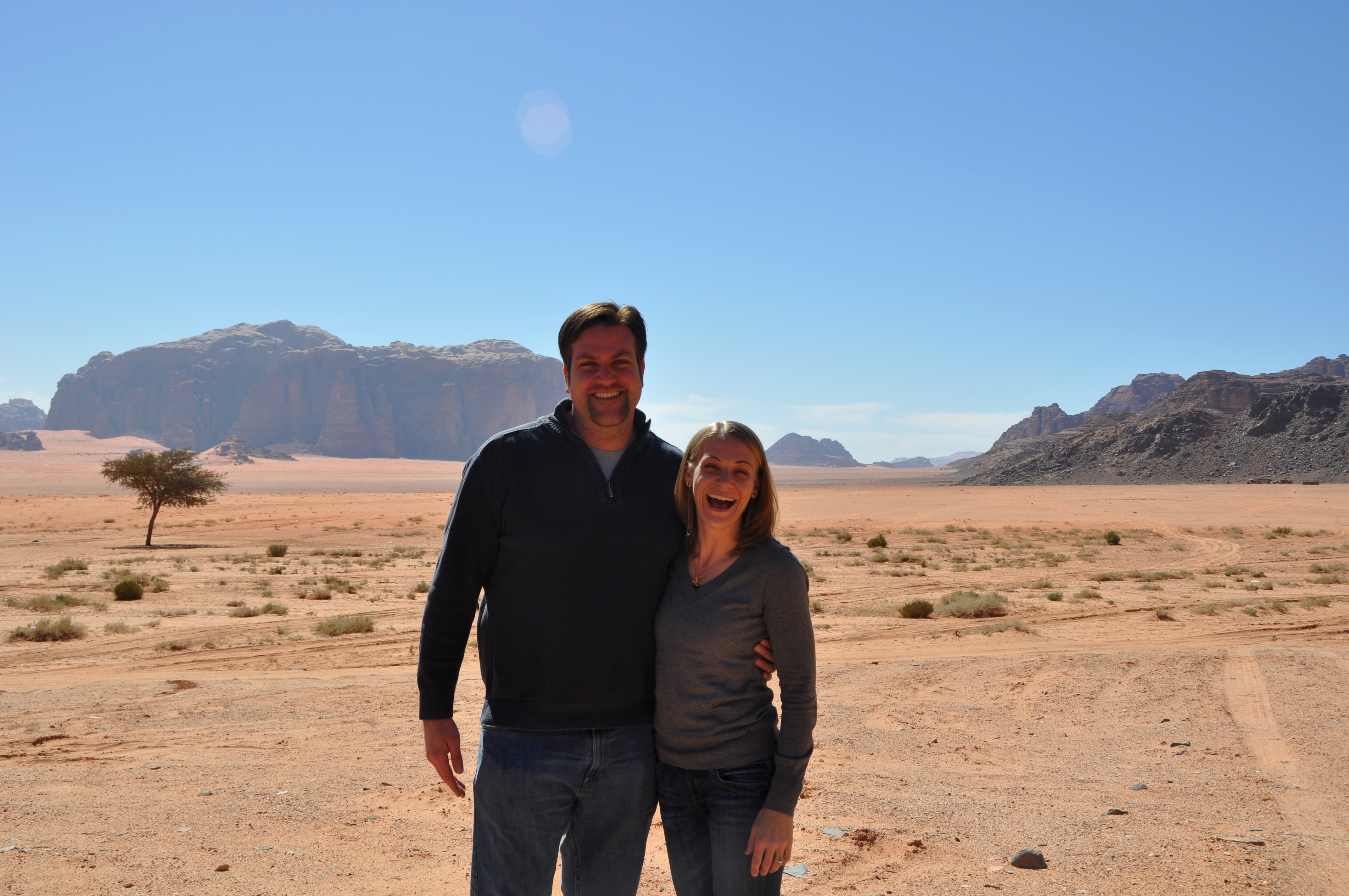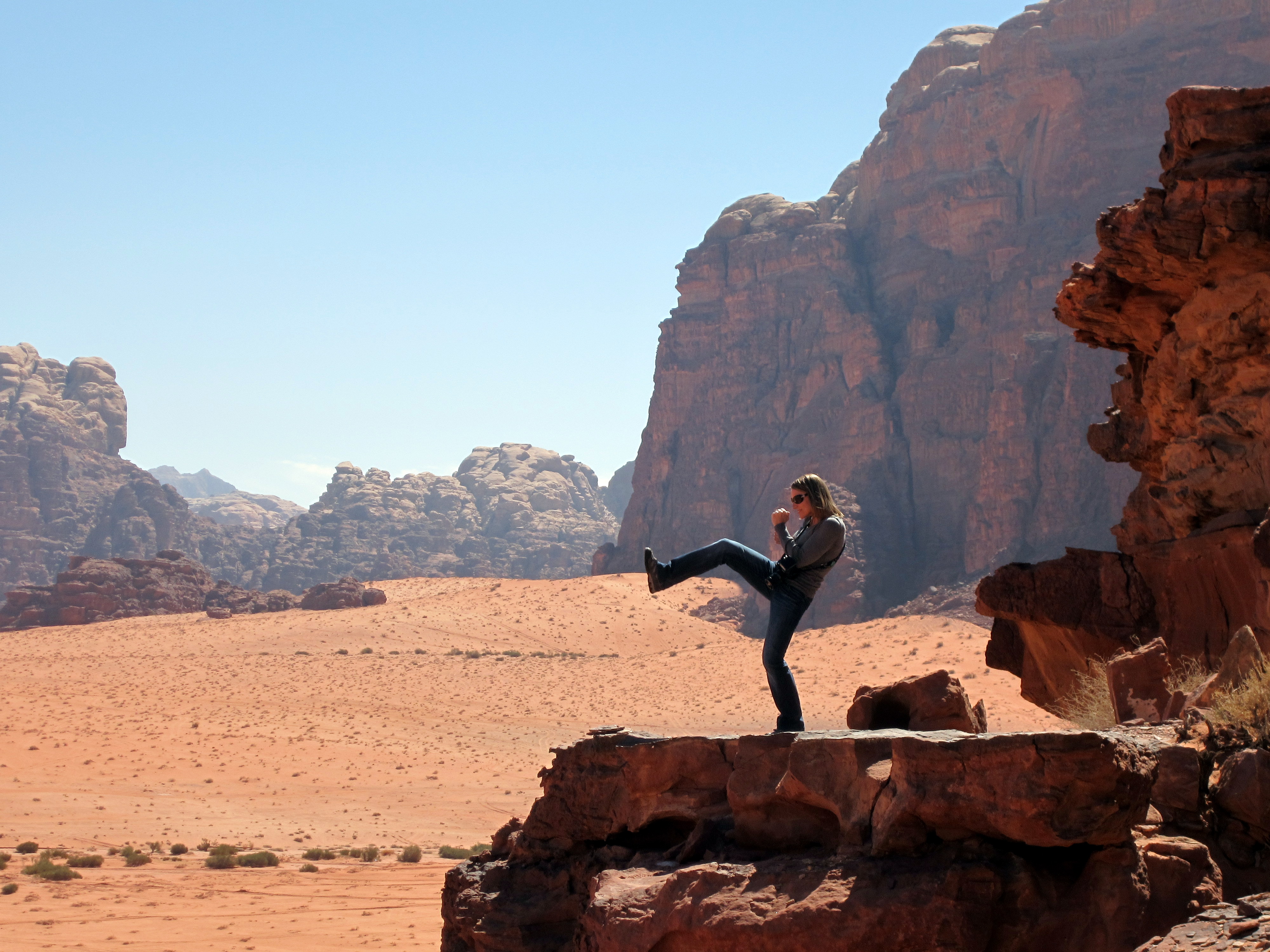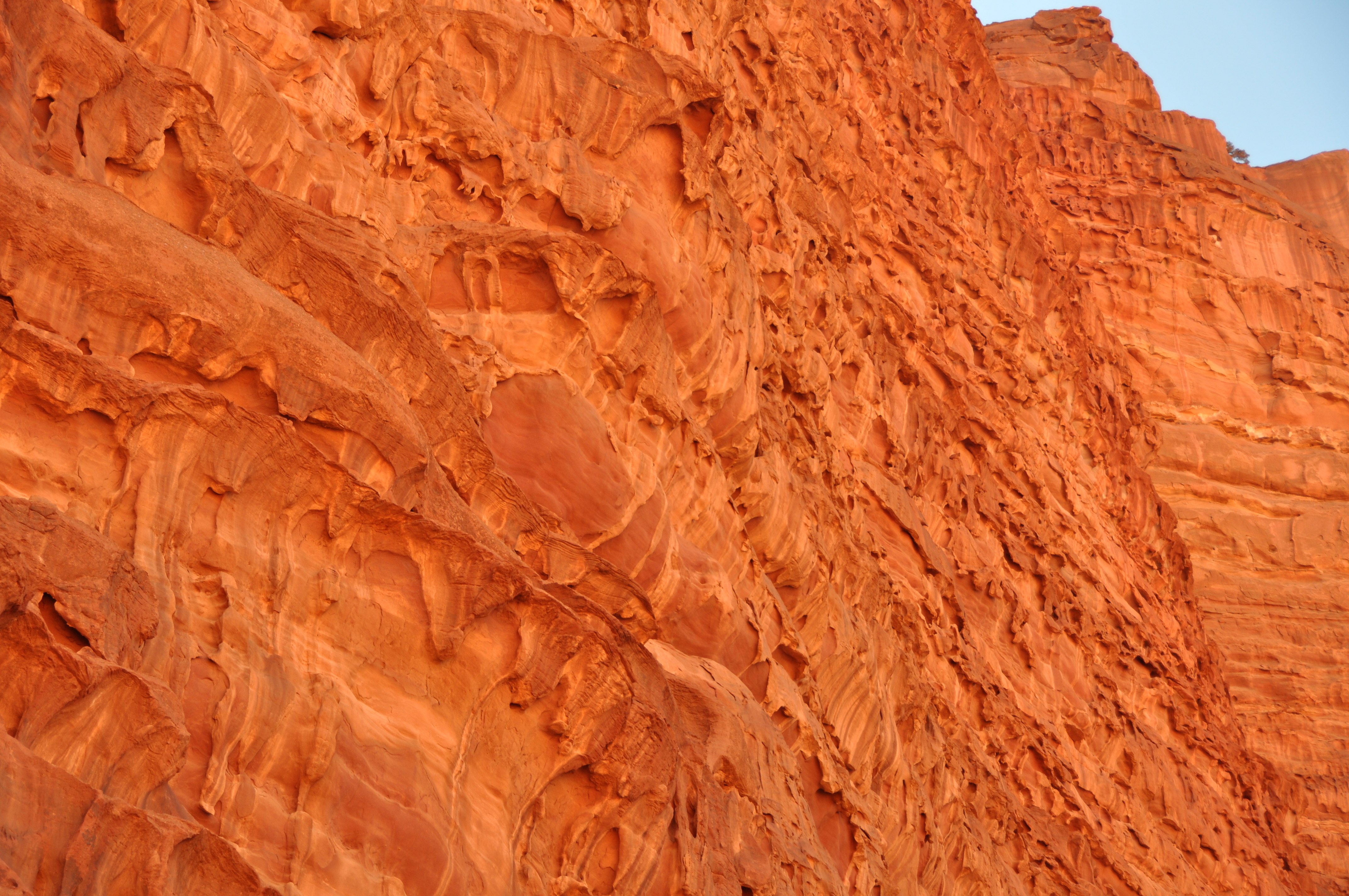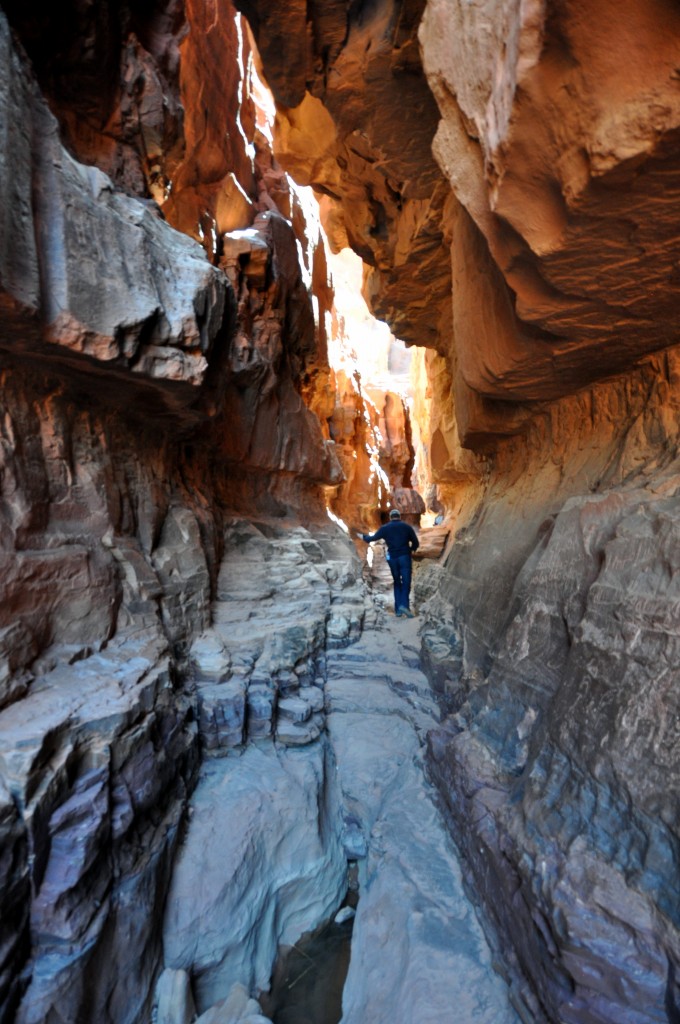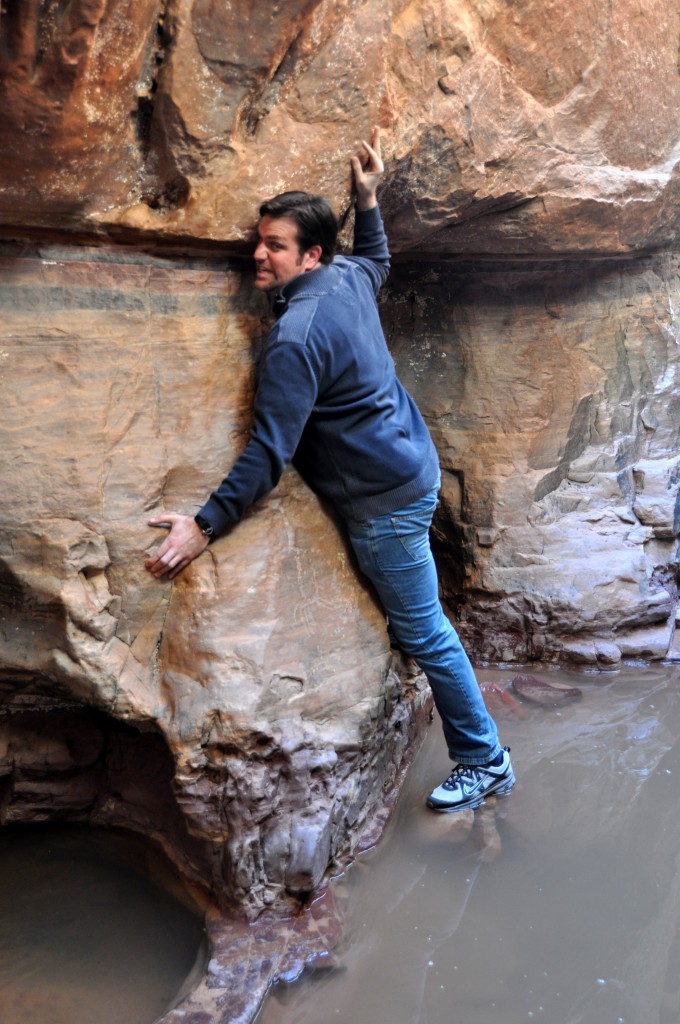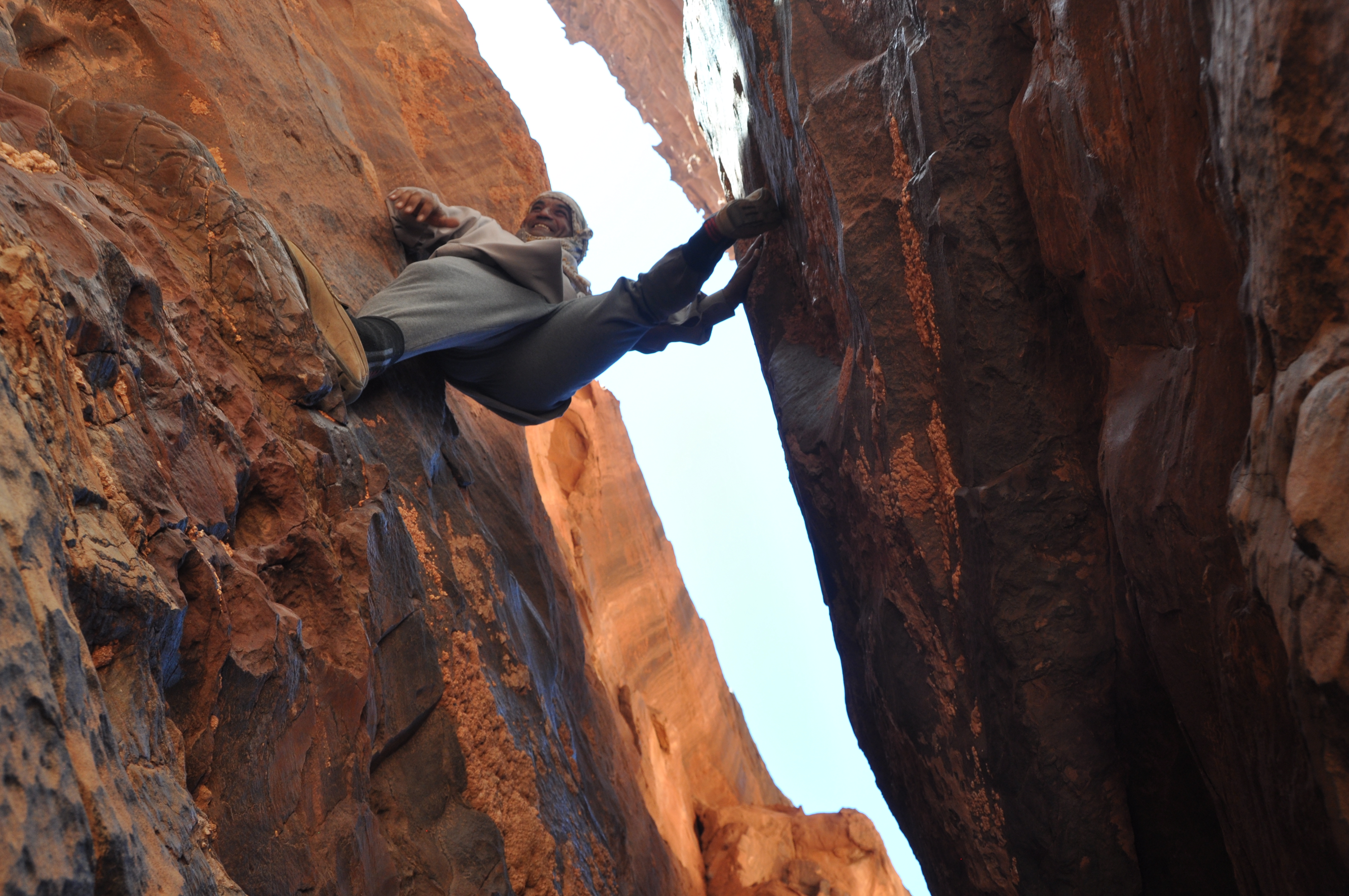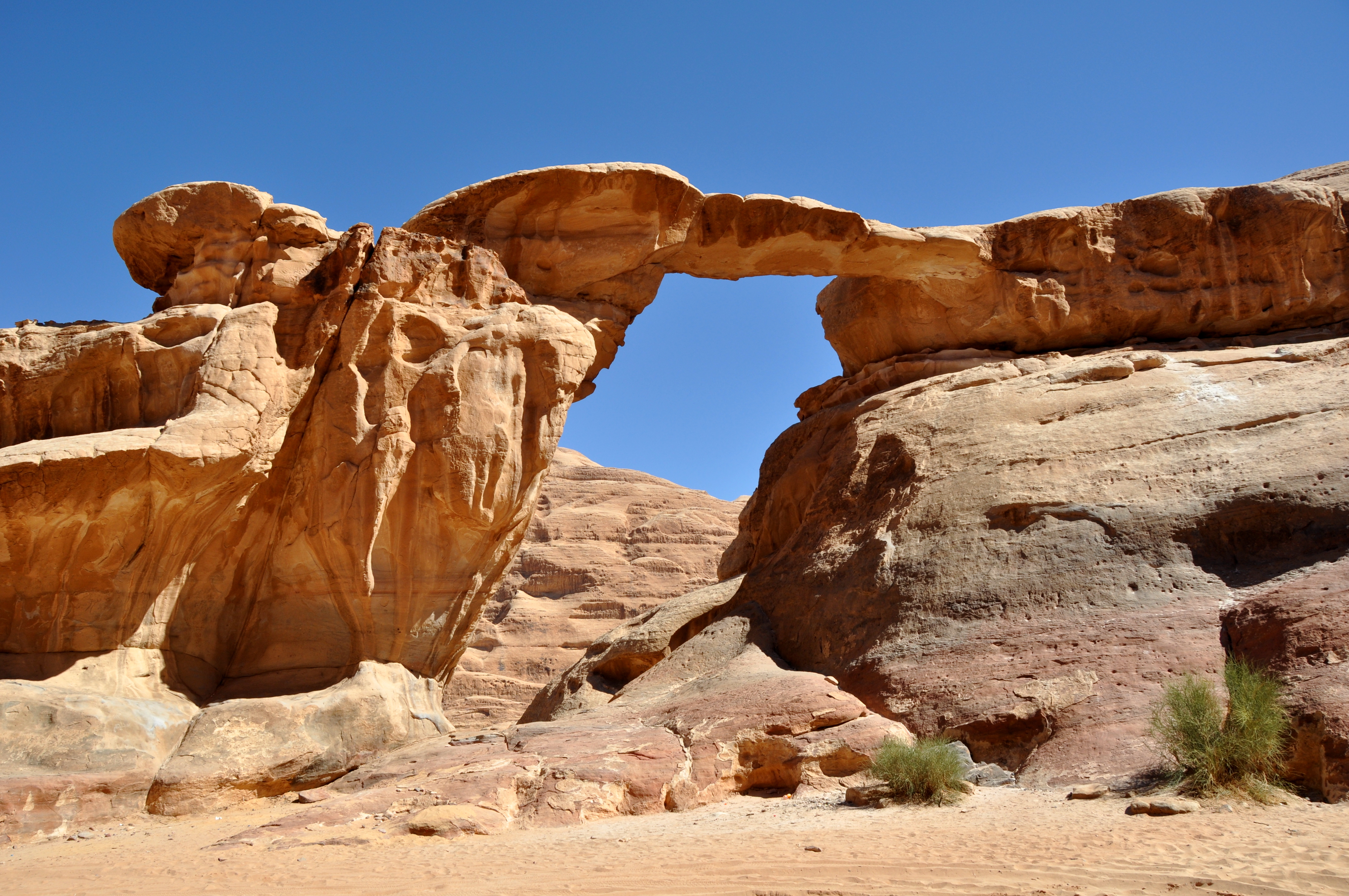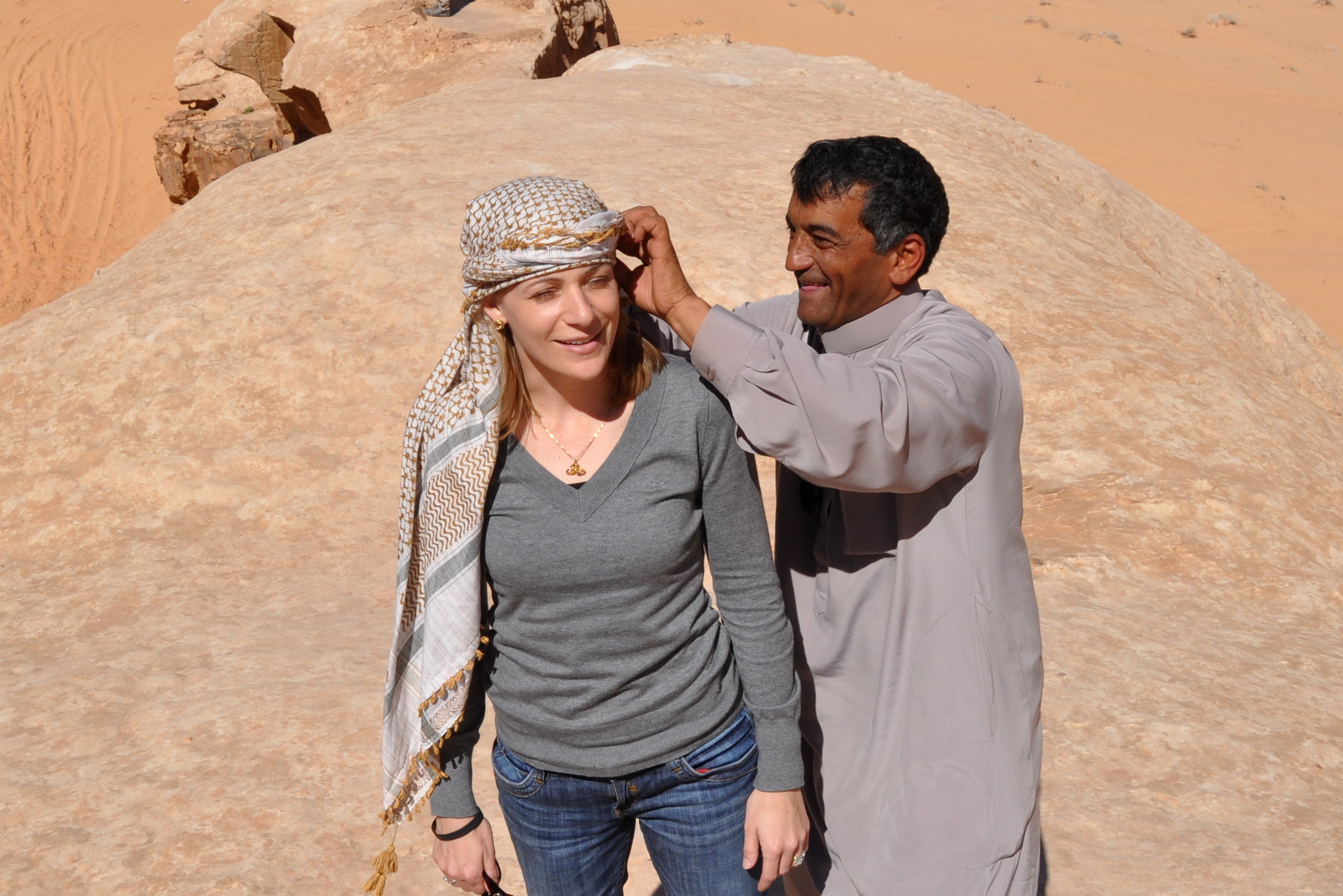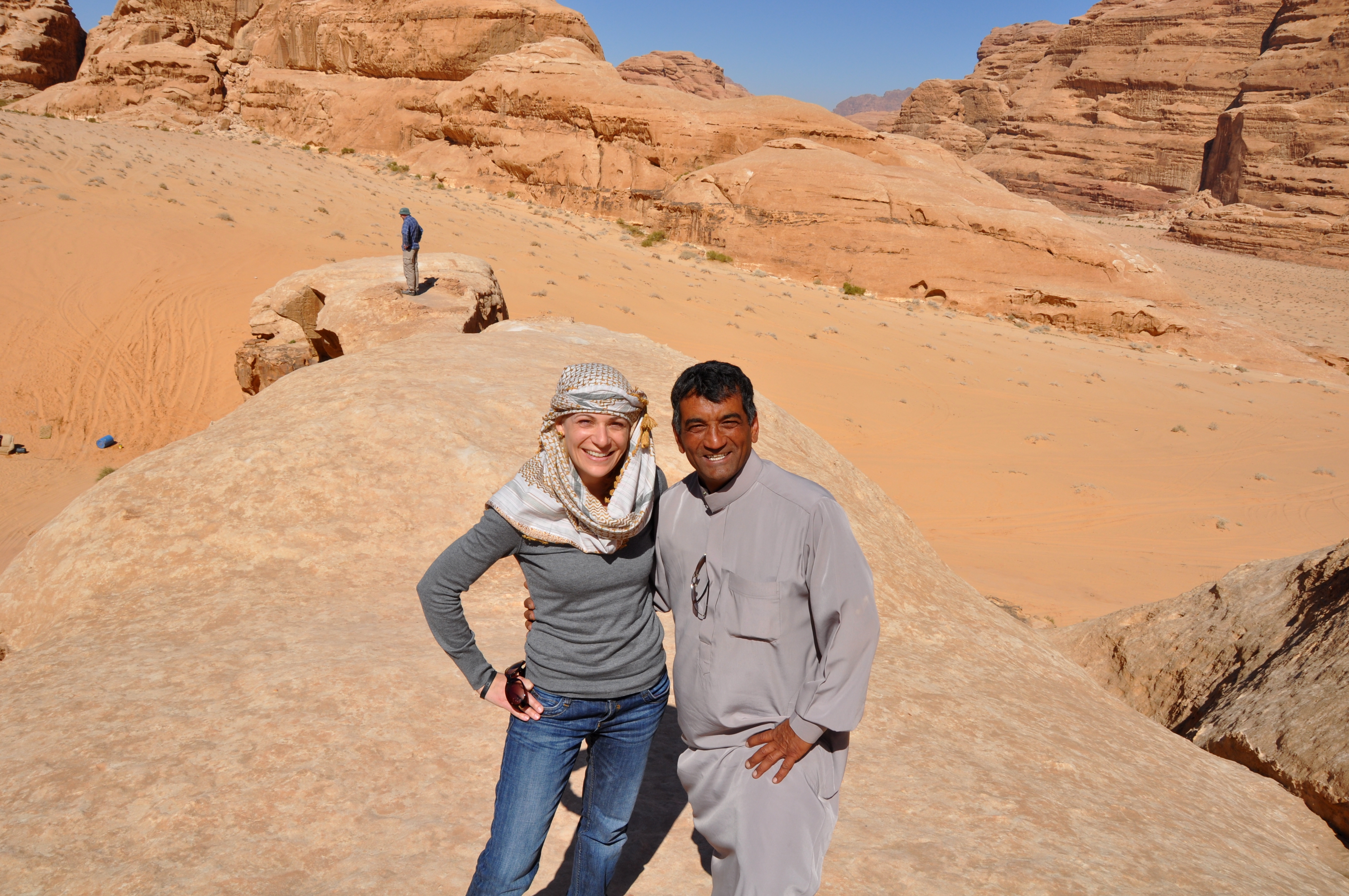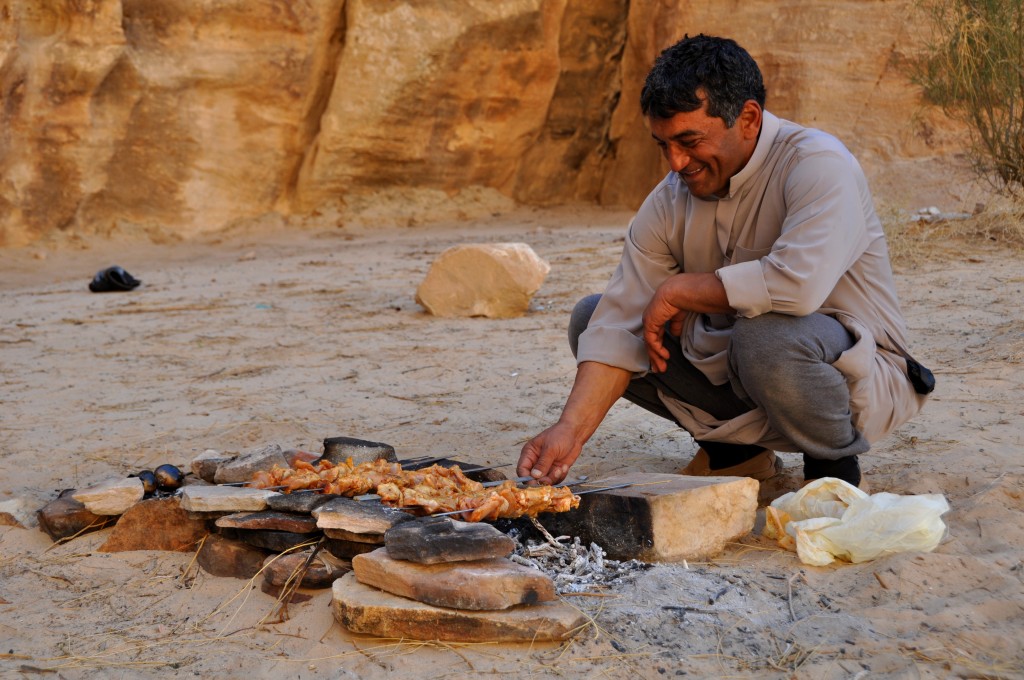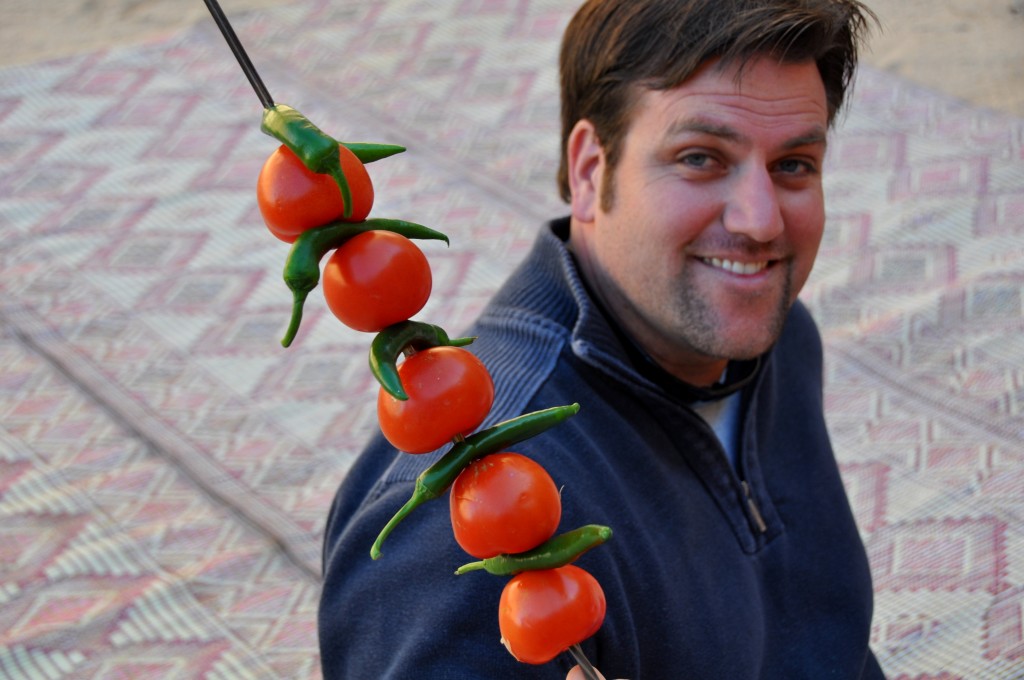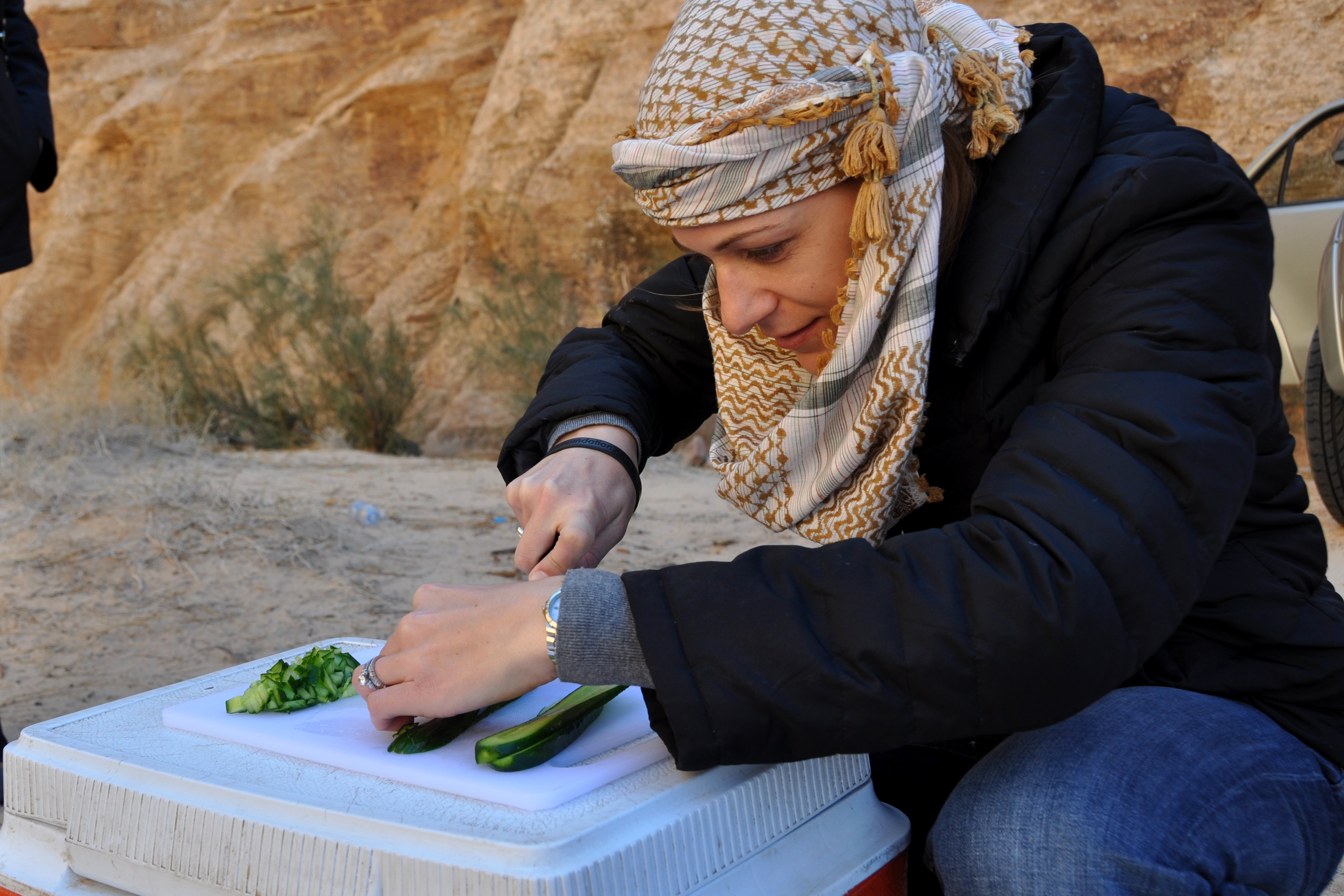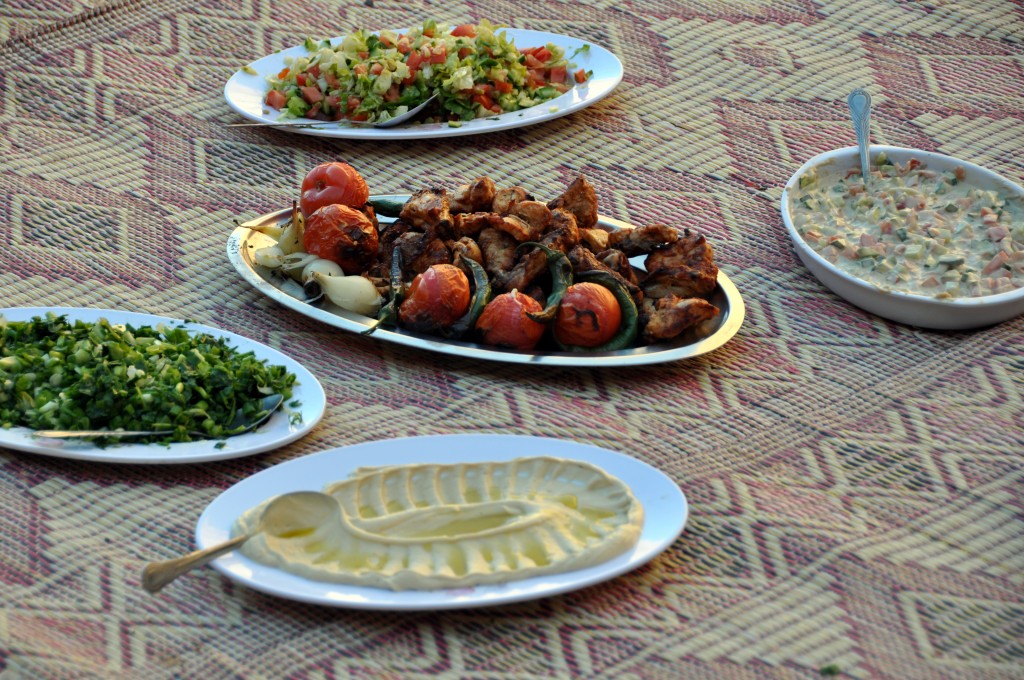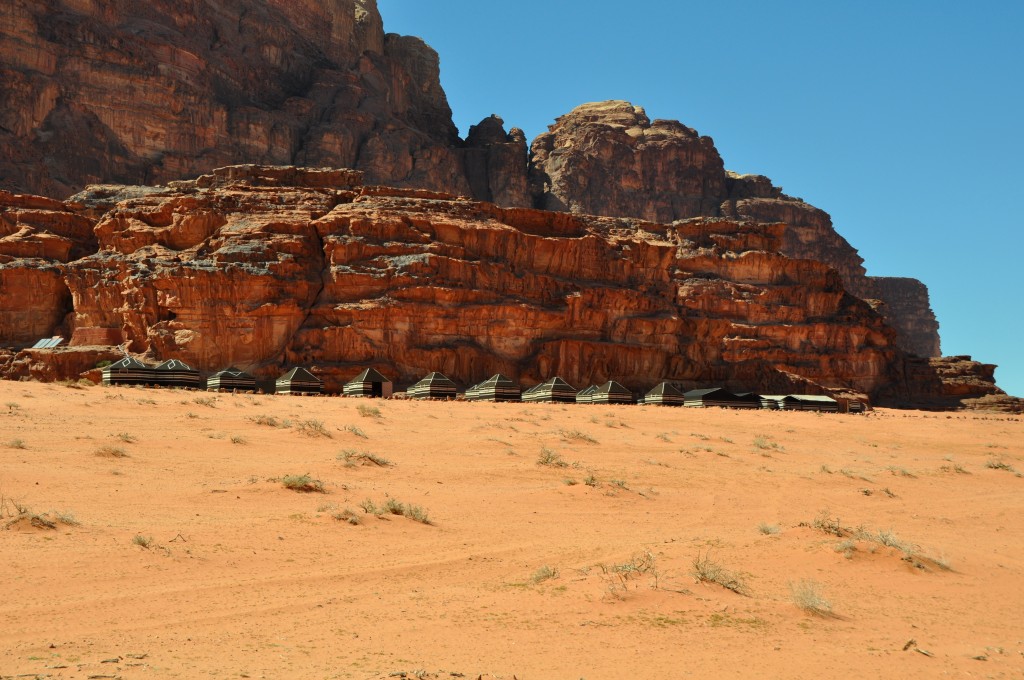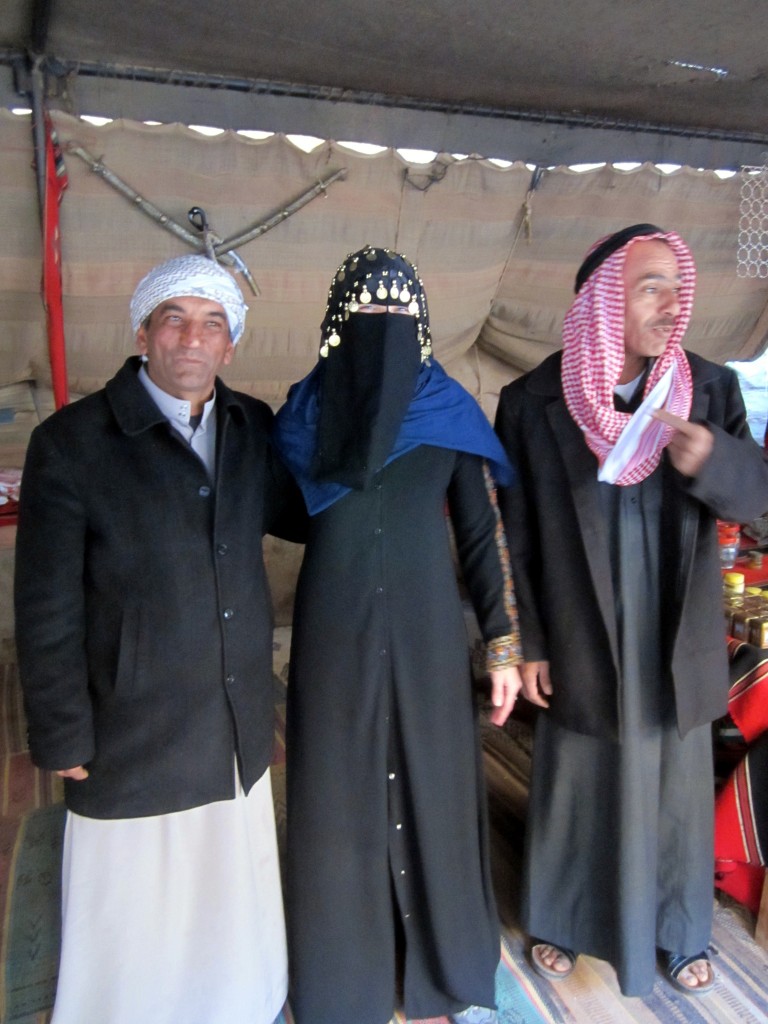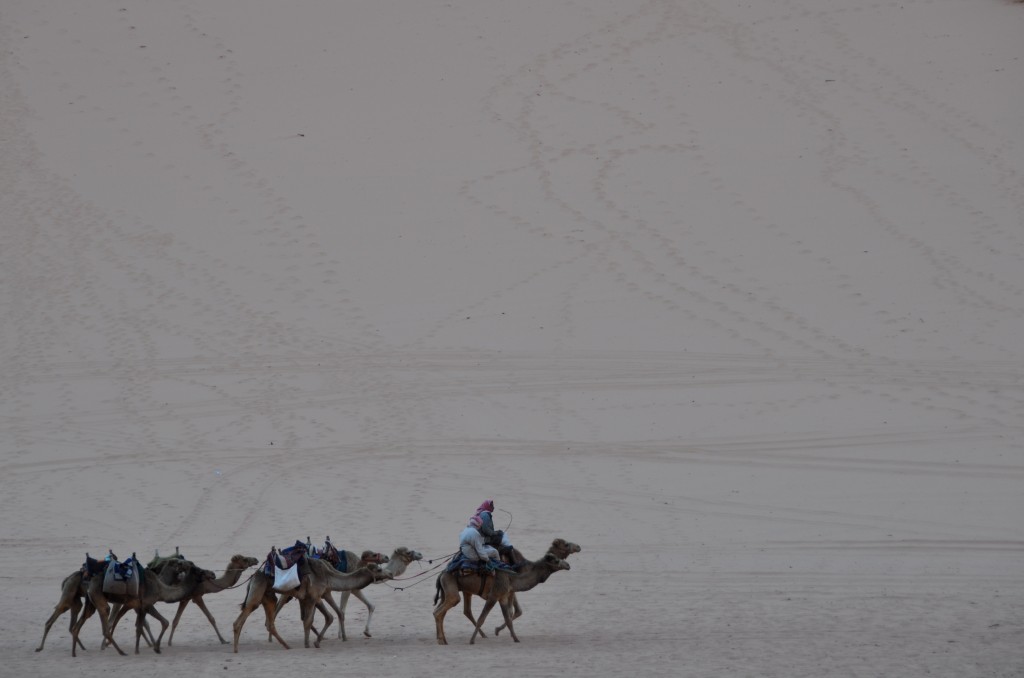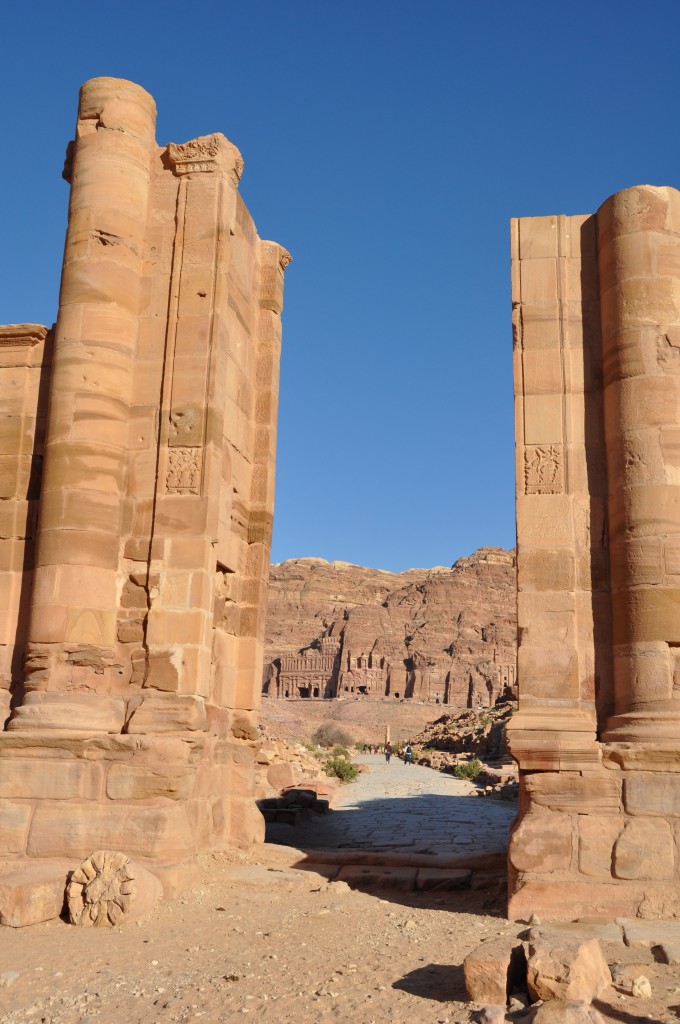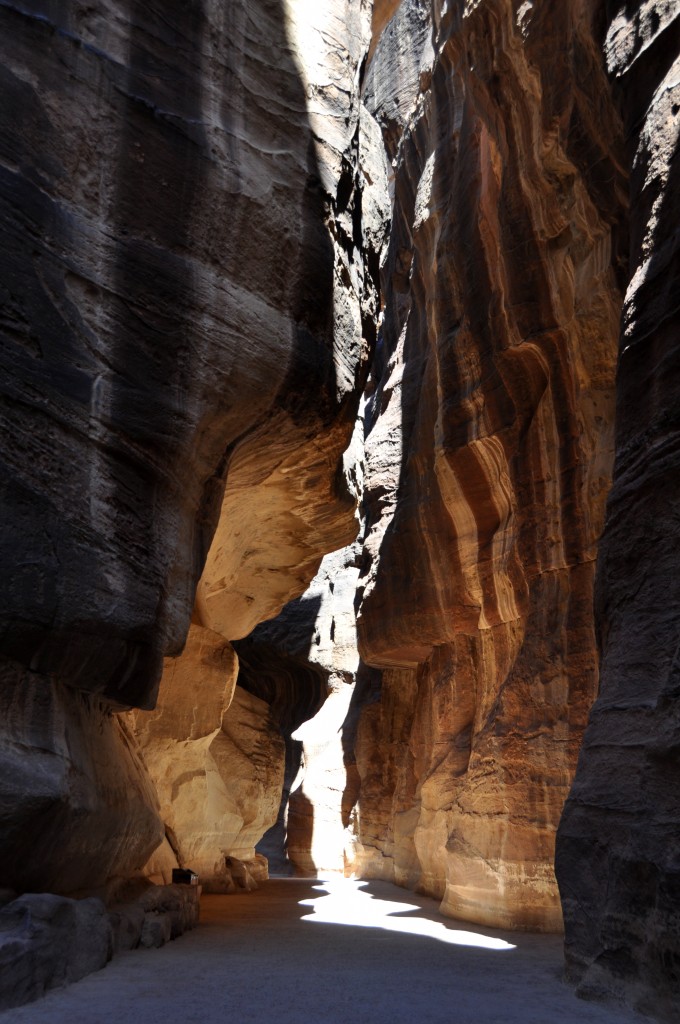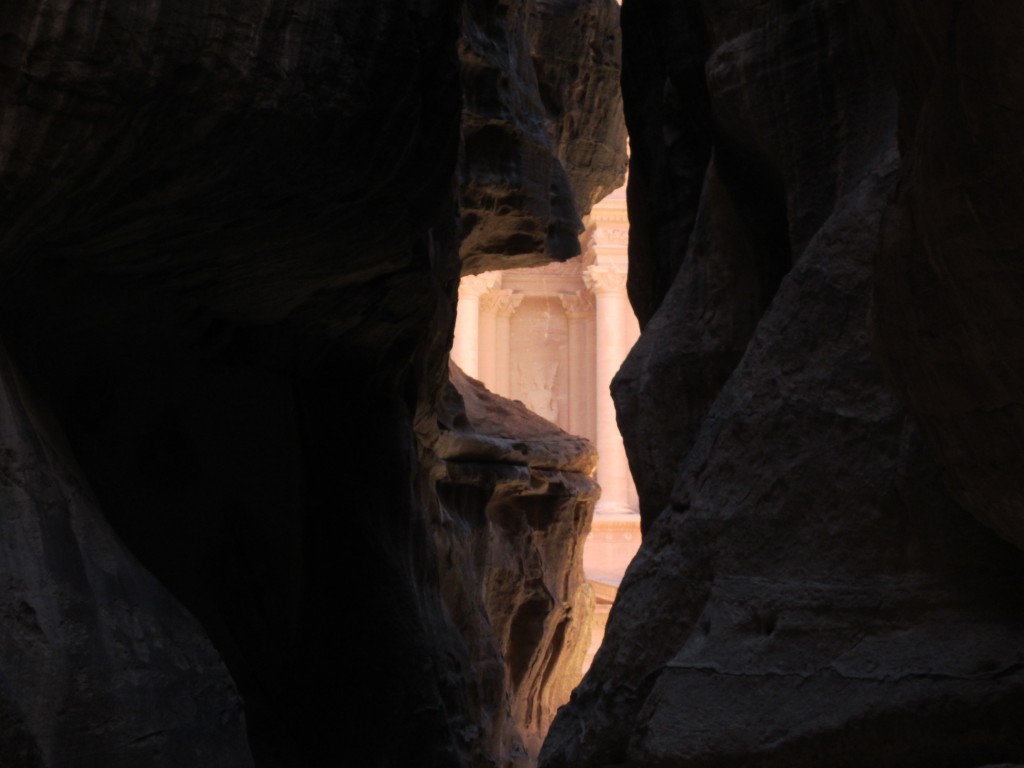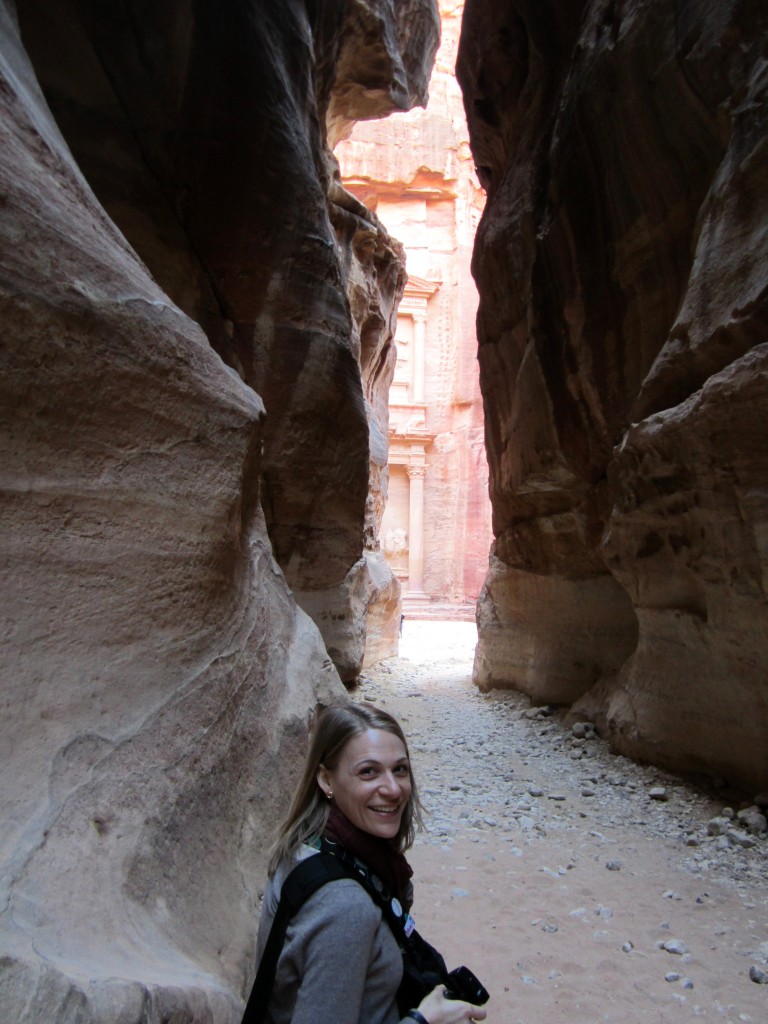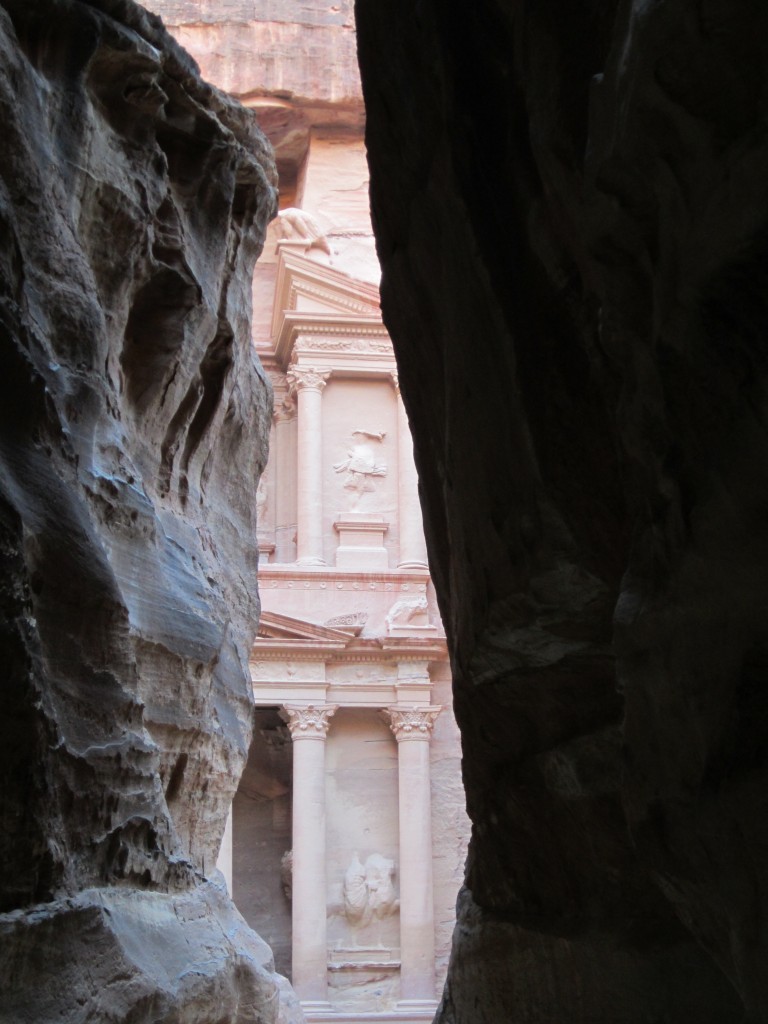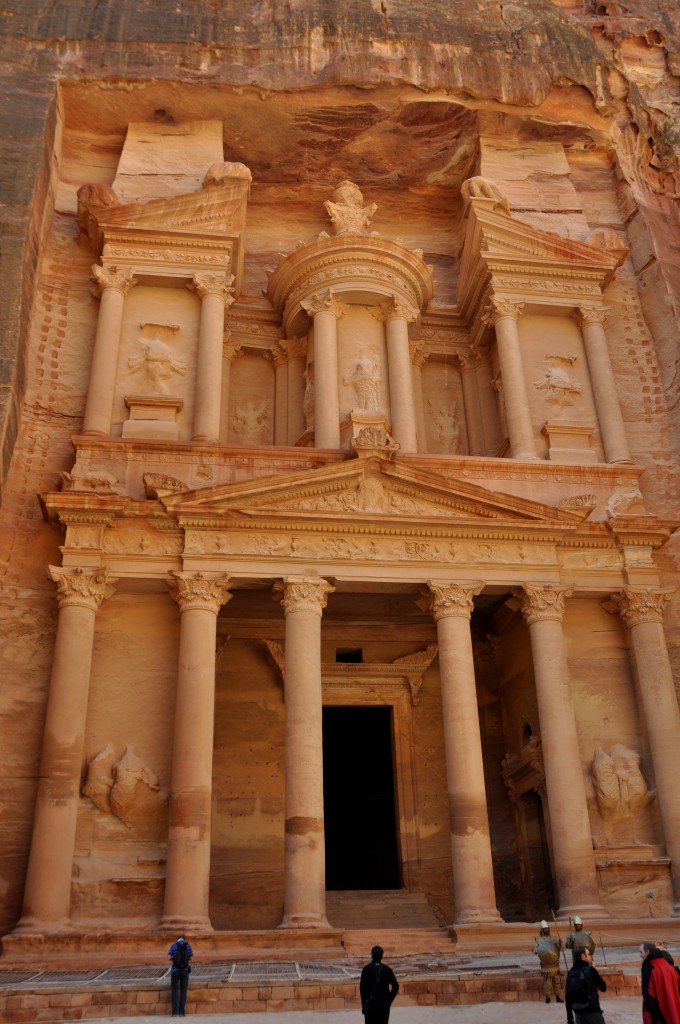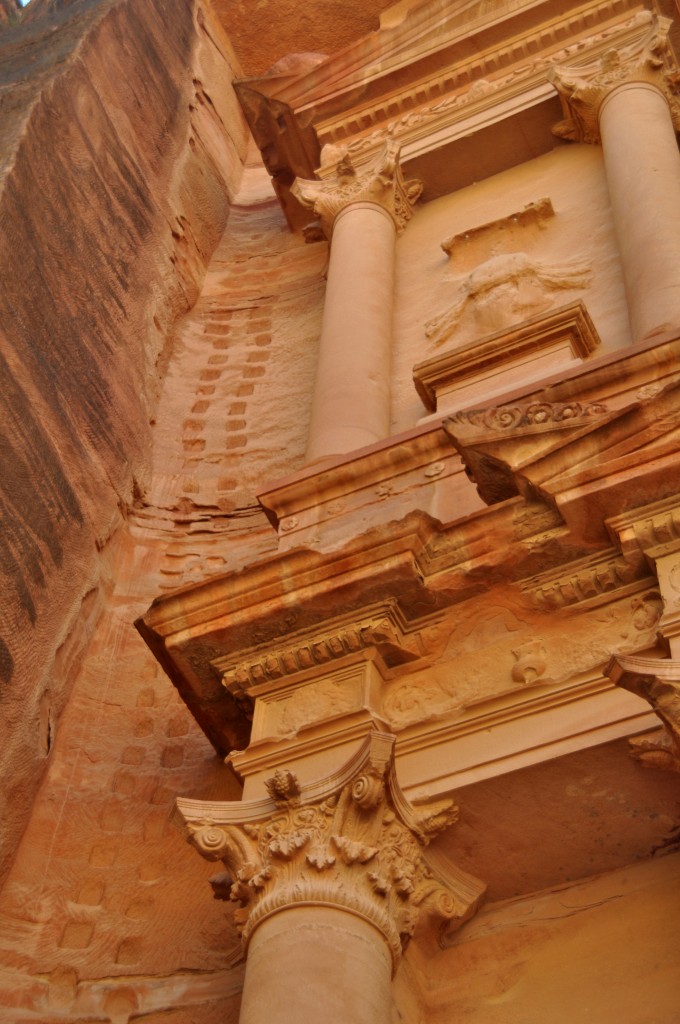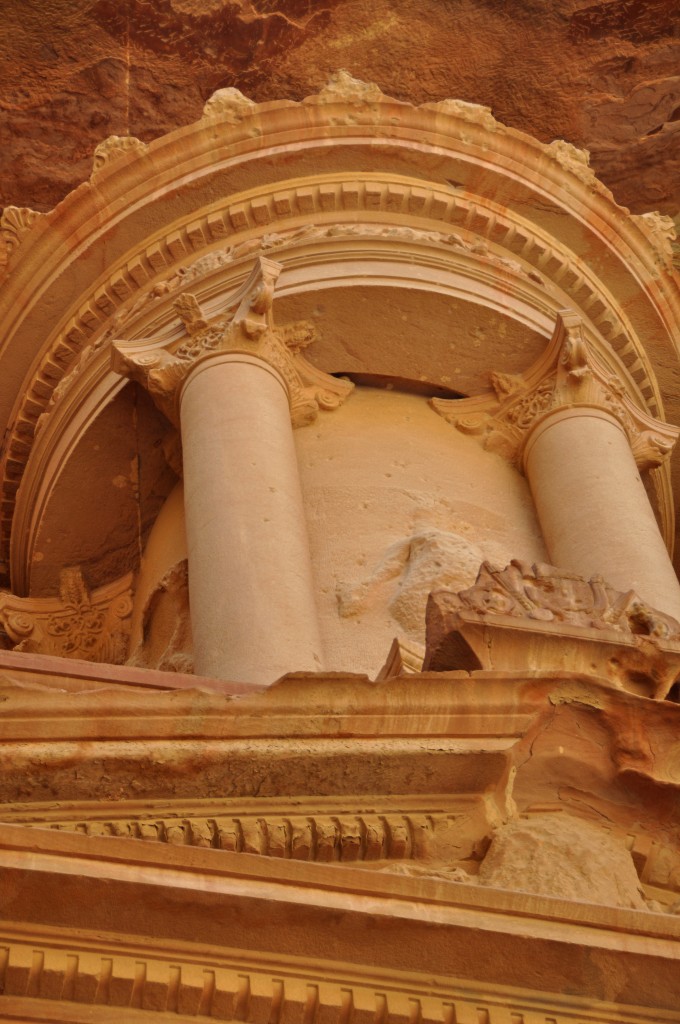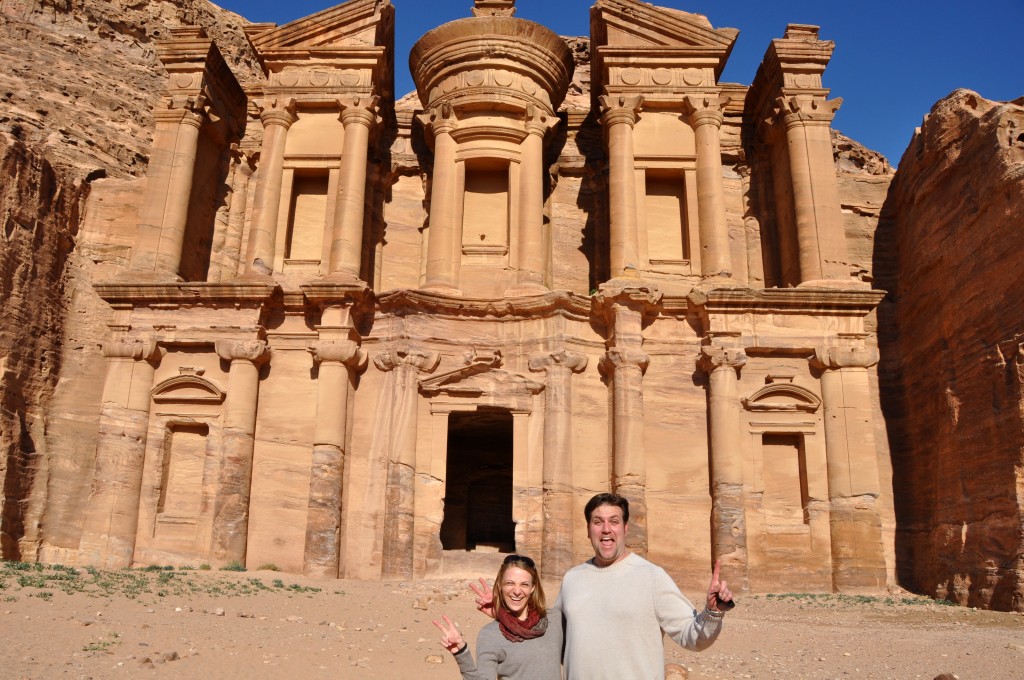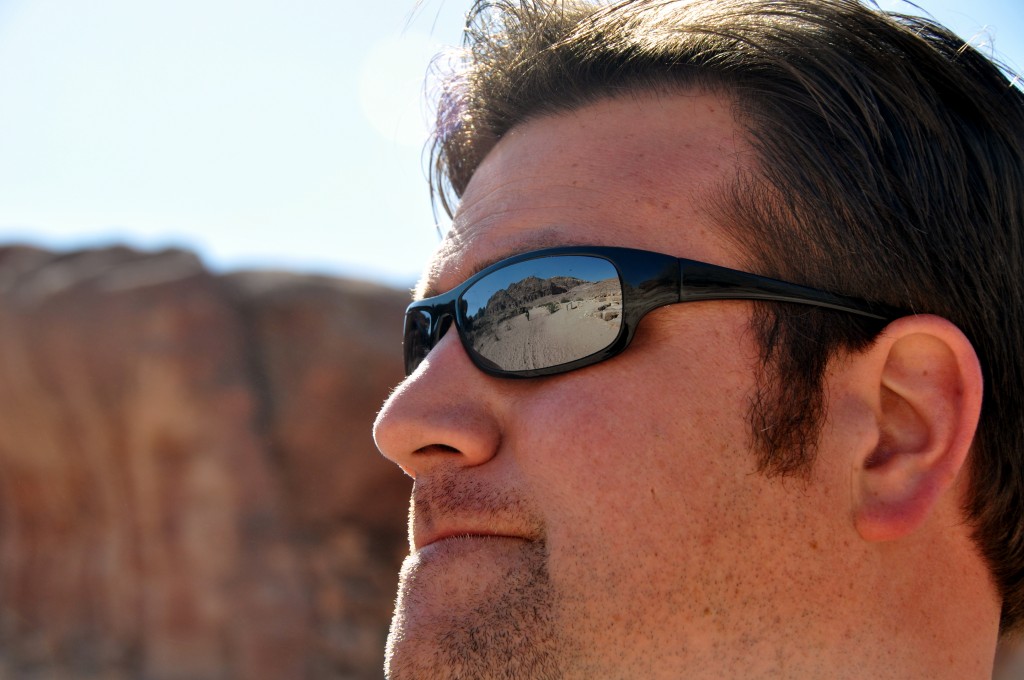3361. That was the current tally on Mohammed’s personal tour-counter for Monday, February 18th. In his thirteenth year of giving tours through Jordan’s Wadi Rum Protected Area, we were tour #3361.
Ultimately, this post is about our picture-perfect day in Wadi Rum, but really it is about Mohammed. It is the people that make a country. It is the people that make an experience. Mohammed gave us quite an experience.
Mohammed is a Bedouin who grew up in the caves of old Petra, before UNESCO declared it a World Heritage Site and moved all of the Bedouins to other locations. As a child, he used to walk 17km (one way) from his cave to school every day. He made a joke about how his 4 children now only have to walk 100m to school, have Internet with Facebook, satellite TV, etc. and are still not happy. Classic.
Wadi Rum, is a 720 km2 desert mentioned in the Koran for its beauty. It is the largest protected area in Jordan, contributing to around 439 viable populations of plants and animals, and the back drop of the true-life Lawrence of Arabia before World War I. Mohammed released the air in the tires (supposedly down to “15”, but I am unsure of the units here, as 15 psi sounds dangerously low, even for desert driving!) and off we went.
I want to say that I performed no “color pumping” on any of these pictures. The reds were really that red. The blue sky was really that idyllic. The Jordanian desert was really that amazing!
First stop, climbing some sand dunes…
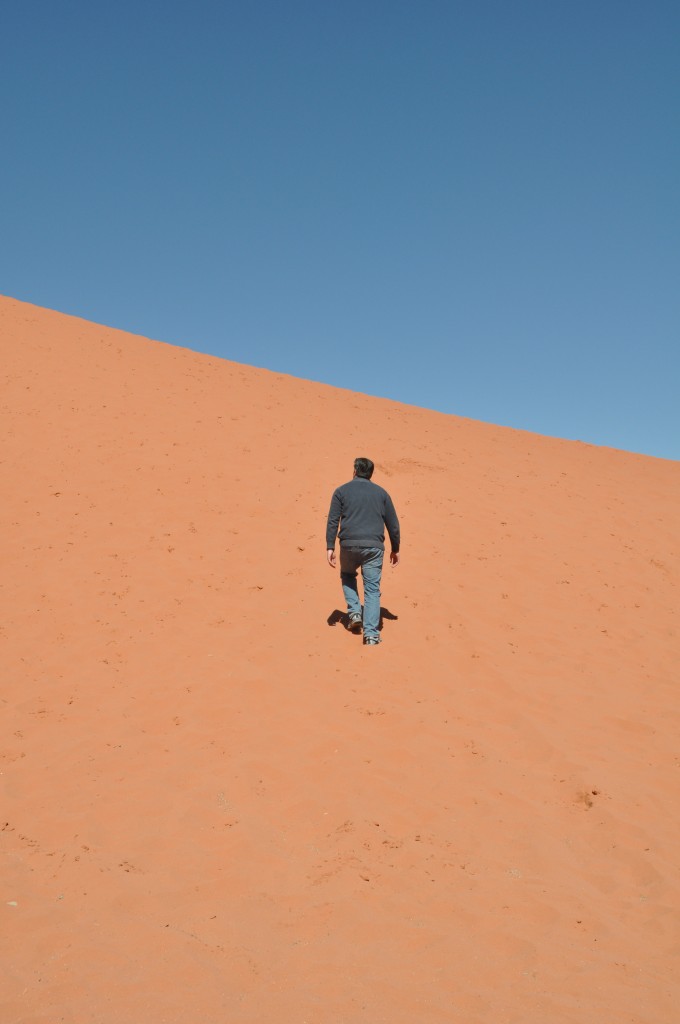
…for an amazing view!
Next, we stopped for a walk through the Burrah Canyon. The rock structures within Wadi Rum are made of either sandstone or granite. At the end of every “winter”, the sandstone has a completely different facade because it is so susceptible to wind and water erosion. Even the desert can receive up to 25cm of rain in one day, giving a lot of the sandstone a very “Dali” look.
Sandstone is also very vulnerable to the troddings of tourists, making our trek a bit challenging.
Mohammed, on the other hand, is apparently part spider-monkey and was jumping and climbing high above our heads.
After the canyon, we drove (and by “drove”, I mean seriously off-roaded through dust-fine sand with continual gear shifting by Mohammed) to the Burdah rock bridge.
Whilst catching my breath from the climb to the top of the bridge and enjoying the view, Mohammed is suddenly standing right in front of me. He is draping my head with his keffiyah and telling Joe what a nice wife he has, thanking him for “sharing” me. I need to brush up on my Jordanian/Muslim wedding-customs, but there may be a small chance that I am now married to Mohammed. Hopefully “sharing” doesn’t have a loose translation in Arabic!
Next was lunch. Mohammed drove us to a shaded area and began to gather kindling in order to cook up our meal.
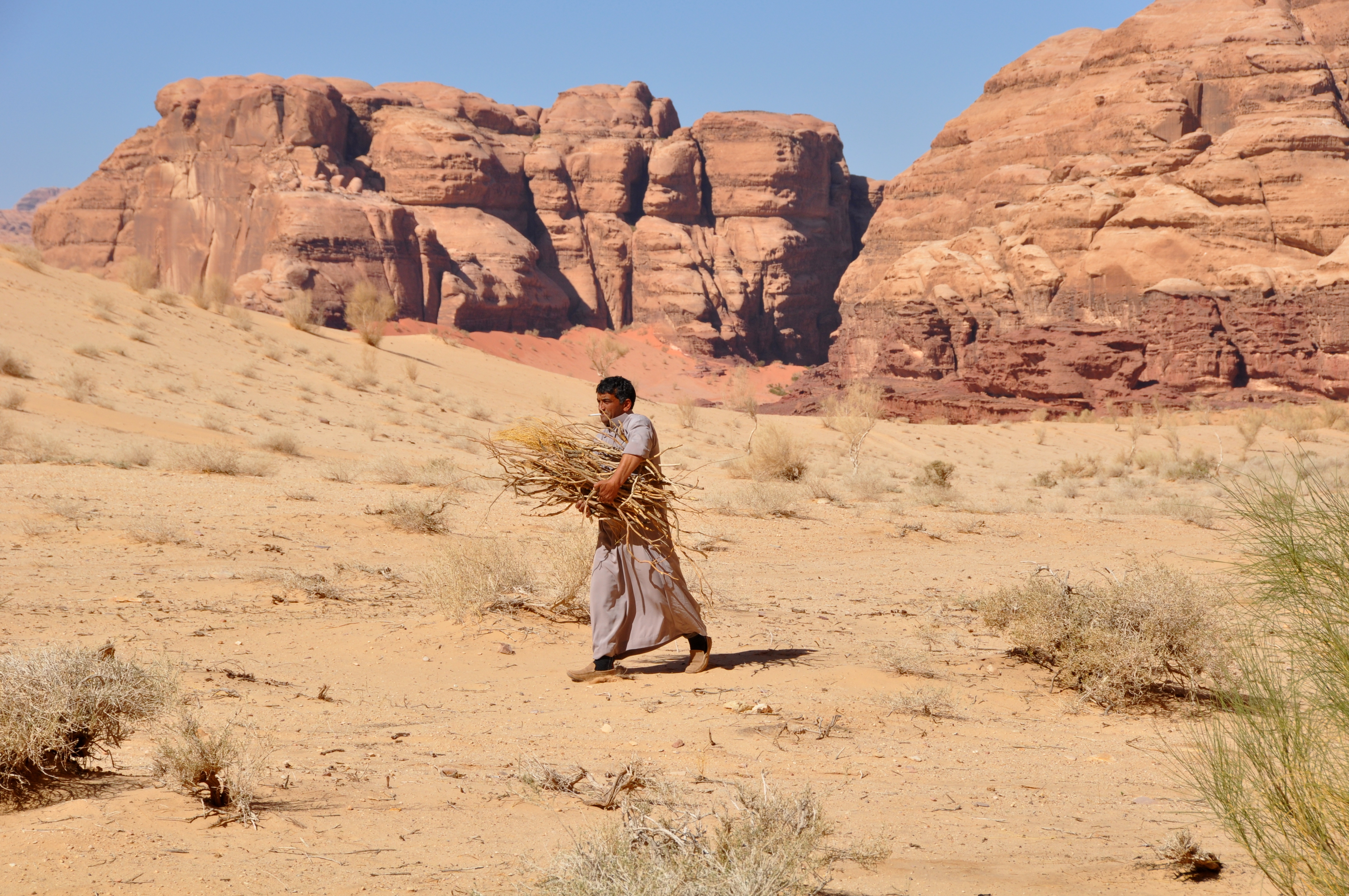
Mohammed and his pre-lunch cigarette, in the desert, with some dry kindling. Hmmm…there are so many things wrong with that sentence.
Lunch entailed chicken, white onions, peppers and tomatoes, all cooked on the fire; cucumber & tomato salad, green onion & arugula salad, and hummus & pitas. Here is the catch: Mohammed grew all of the vegetables in the garden outside his house in Petra, his mother baked the pitas, and his father grew the olives that were used to make the olive oil. Just wait though. Mohammed also has a chicken farm, from which 3 of the chickens were used to make our lunch. We jokingly/lovingly referred to it as the “12-hour” chicken, as less than 12 hours prior to lunch, the chickens were enjoying life on Mohammed’s farm. It doesn’t get any fresher than that!
What was really surprising was listening to Mohammed talk about the behavior of different tourist groups during lunch time. Some just sat around and made demands, some took thousands of pictures, some just refused to eat. We only got this information because I requested a task or two to help out. I’m sure we slowed the process down, but I think he appreciated the gracious attitudes.
After lunch we drove around the desert some more, stopping to enjoy the sights, and then at a Bedouin camp for tea.
So, I’m not quite sure if it was my Scandinavian skin, my willingness to try anything, or the fact that I was already Mohammed’s “second” wife, but I was asked to put down my tea and walk over to a different side of the tent. Mohammed then proceeded to dress me in a burka. He said that on some of his tours he actually takes tourists (including Americans) across the border into Saudi Arabia to shop. The women must be dressed in these burkas and are not permitted to speak. There was a short conversation with Joe about my worth in camels. I think the final number was 200. Based on that agreement, the guy on the right may also be my new husband.
Well, that pretty much wrapped up our day. As we left the Wadi Rum Protected Area, Mohammed stopped to fill the tires with more air. There was a lot of talking, and bit of confusion, and we left without air. Apparently the entire area was without electricity. Oh well. We’ll just drive 60mph on the “highway”, with minimal air, until we find something else. No biggie! It’s all in good fun!
It was really an amazing day. One of my favorites in this Olmsted journey, thus far. By the way, Mohammed has 6000 friends on Facebook. If he accepts me, (and those 200 camels arrive in Freiburg) my relationship status might just turn into “It’s Complicated”!

